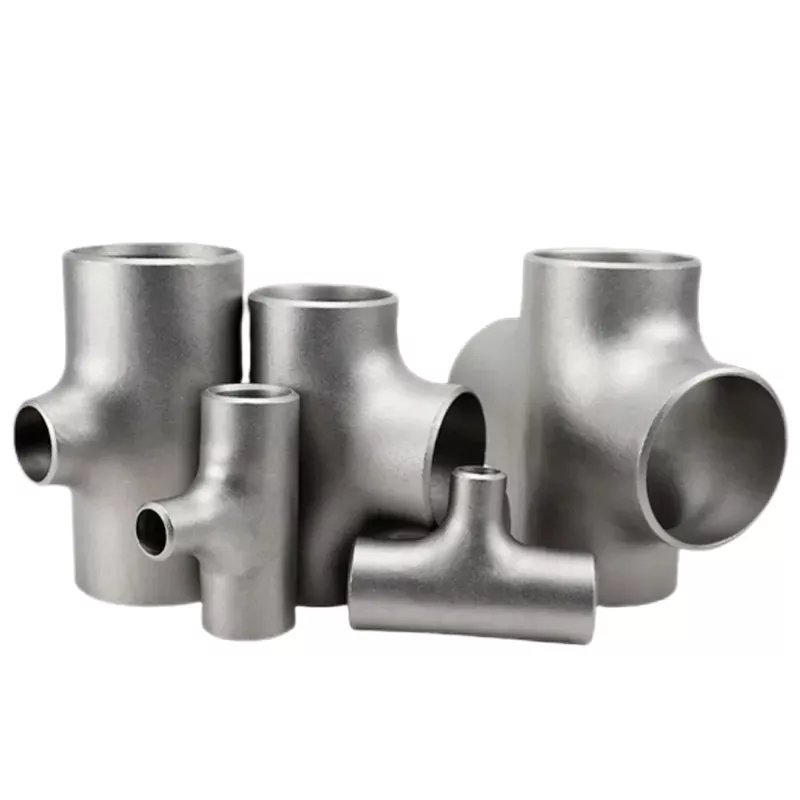Stainless Steel Pipe Fitting: Reliable Solutions for Modern Piping Systems
2025-04-09
In the world of plumbing, industrial piping, and fluid transport, the quality of pipe fittings plays a crucial role in ensuring efficiency, durability, and safety. Among the many materials used for fittings, stainless steel stands out for its strength, corrosion resistance, and long service life. Stainless steel pipe fittings have become an essential choice across a wide range of industries, from construction and water treatment to oil and gas.
What Are Stainless Steel Pipe Fittings?
Stainless steel pipe fittings are components used to connect, control, and change the direction of pipes in a piping system. They come in a variety of shapes and configurations, including elbows, tees, couplings, reducers, and flanges. These fittings are manufactured from stainless steel, a material known for its high resistance to rust, chemical corrosion, and extreme temperatures.
Why Choose Stainless Steel?
One of the main reasons for choosing stainless steel is its durability. It can withstand high-pressure environments and is resistant to cracking, pitting, and wear. This makes it ideal for systems that transport liquids, gases, or corrosive substances.
Stainless steel is also highly hygienic and easy to clean, which is why it is often used in the food, beverage, and pharmaceutical industries. Its non-reactive nature ensures that it does not affect the taste or quality of the substances it carries.
Additionally, stainless steel has a sleek, polished appearance that makes it suitable for both functional and visible applications. It adds a modern, professional look to exposed piping in architectural or commercial settings.
Types of Pipe Fittings Available
Depending on the needs of the system, stainless steel pipe fittings are available in various grades and specifications. Common grades include 304 and 316 stainless steel. Grade 304 is suitable for general-purpose use, while grade 316 contains molybdenum for extra corrosion resistance, especially in marine or acidic environments.
The range of fitting types includes:
- Elbows to change the direction of flow
- Tees to branch off pipes
- Couplings to connect straight pipe sections
- Reducers to connect pipes of different diameters
- Flanges to allow easy disassembly and reassembly
Each fitting type plays a specific role in building a reliable and flexible piping system.
Applications Across Industries
Stainless steel pipe fittings are used in a wide variety of industries. In residential and commercial construction, they are used for water supply and drainage systems. In the chemical and petrochemical industries, they handle aggressive fluids under high pressure and temperature. In food and beverage processing, they maintain sanitary conditions while ensuring efficient flow.
Their ability to perform under tough conditions makes them a preferred choice wherever long-term performance and safety are priorities.
Long-Term Value
Although stainless steel pipe fittings may have a higher initial cost compared to other materials, they offer excellent long-term value. Their durability means fewer repairs and replacements, while their resistance to corrosion ensures long service life even in challenging environments.
Moreover, stainless steel is a recyclable material, contributing to more sustainable and environmentally responsible construction and manufacturing practices.
Conclusion
Stainless steel pipe fittings offer a perfect combination of strength, reliability, and versatility. Whether for industrial use, commercial plumbing, or specialized applications, these fittings ensure that piping systems remain leak-free, safe, and long-lasting. As infrastructure and technology continue to advance, stainless steel remains a trusted and essential material for connecting the flow of progress.



